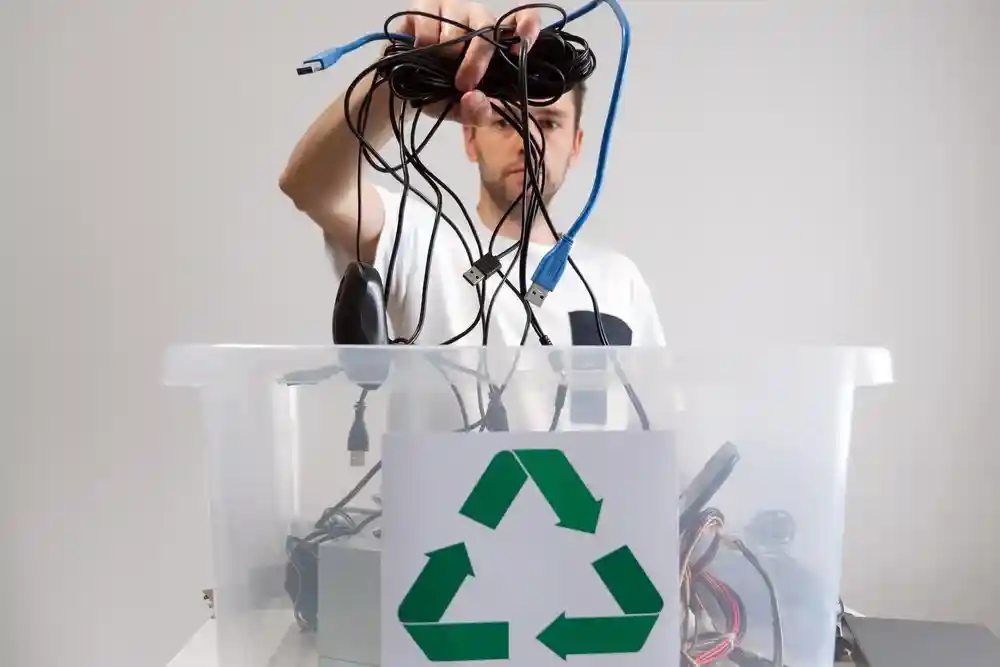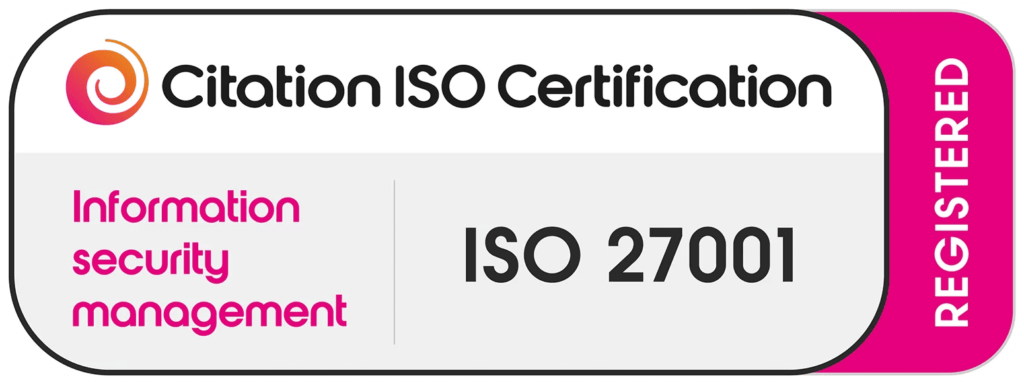Introduction
Overview of IT Waste Recycling
Secure IT Waste Recycling In our digital era, electronic devices have become integral to daily life. However, the rapid turnover of technology leads to significant electronic waste (e-waste). Secure IT waste recycling addresses this challenge by ensuring that obsolete devices are disposed of responsibly, protecting both data and the environment.
Importance of Sustainable IT Disposal
Sustainable IT disposal is crucial for minimizing environmental impact and safeguarding sensitive information. By employing eco-friendly electronics recycling and certified e-waste recycling practices, organizations can contribute to a greener planet while maintaining data security.
Understanding IT Waste
Definition and Types of IT Waste
IT waste encompasses discarded electronic devices such as computers, servers, smartphones, and peripherals. These items often contain hazardous materials like lead and mercury, necessitating proper disposal methods.
Sources of Electronic Waste in IT
E-waste originates from various sources, including corporate upgrades, consumer electronics, and obsolete IT infrastructure. The proliferation of digital devices has significantly increased the volume of electronic waste globally.
The Growing Challenge of E-Waste
Global Statistics on Electronic Waste
According to the World Health Organization, an estimated 62 million tonnes of e-waste were produced globally in 2022, with less than a quarter recycled appropriately.
Environmental and Health Impacts
Improper e-waste disposal releases toxic substances into the environment, contaminating soil, water, and air. Exposure to these toxins poses significant health risks, particularly in low- and middle-income countries where informal recycling practices are common.
Importance of IT Waste Recycling
Benefits to the Environment
Recycling IT waste reduces the need for raw material extraction, conserving natural resources and decreasing greenhouse gas emissions. It also prevents hazardous substances from polluting ecosystems.
Economic Advantages
The e-waste recycling industry contributes to economic growth by creating jobs and recovering valuable materials like gold, silver, and copper from discarded electronics.
Compliance with Regulations
Adhering to e-waste management regulations ensures legal compliance and avoids potential fines. Certified e-waste recycling practices align with international standards, promoting responsible disposal.
IT Asset Disposal (ITAD) Explained
What is ITAD?
IT Asset Disposition (ITAD) refers to the process of securely and responsibly disposing of obsolete IT equipment. It encompasses data destruction services, recycling, and remarketing of usable components.
Processes Involved in ITAD
The ITAD process includes inventory assessment, data sanitization, hardware dismantling, and material recovery. Partnering with certified providers ensures that each step complies with environmental and data protection standards.
Data Security in IT Recycling
Risks of Data Breaches
Discarded IT assets may contain sensitive information, posing risks of data breaches if not properly sanitized. Unauthorized access to residual data can lead to financial loss and reputational damage.
Methods of Secure Data Destruction
Secure data destruction methods include degaussing, shredding, and overwriting data using certified software. These practices ensure that information is irretrievable, maintaining data confidentiality.
Certified E-Waste Recycling
Importance of Certification
Certification verifies that e-waste recycling processes meet established environmental and security standards. It provides assurance that IT asset disposal is conducted responsibly.
Recognized Certification Bodies
Notable certification bodies include:
- R2 (Responsible Recycling)
- e-Stewards
- ISO 14001 (Environmental Management)
- NAID (National Association for Information Destruction)
Engaging with certified recyclers ensures adherence to best practices in e-waste management.
Steps in the IT Recycling Process
Collection and Transportation
Secure collection and transportation of IT assets prevent unauthorized access and potential data breaches during transit.
Sorting and Assessment
Devices are sorted to determine their condition. Functional equipment may be refurbished, while non-functional items are earmarked for material recovery.
Data Wiping and Destruction
Certified data destruction services employ methods like degaussing and shredding to eliminate data from storage devices, ensuring information security.
Material Recovery and Recycling
Recovered materials such as metals and plastics are processed for reuse, reducing the demand for virgin resources and minimizing environmental impact.
Challenges in IT Waste Recycling
Technological Obsolescence
Rapid technological advancements lead to shorter device lifespans, increasing the volume of e-waste and complicating recycling efforts.
Lack of Awareness
Many organizations and individuals are unaware of proper e-waste disposal methods, leading to improper handling and environmental harm.
Illegal Dumping and Export
Illicit e-waste dumping and export to countries with lax regulations exacerbate environmental and health issues, highlighting the need for stringent enforcement.
Innovations in IT Waste Management
Advanced Recycling Technologies
Emerging technologies enhance the efficiency of material recovery, enabling the extraction of valuable components from complex electronic devices.
Automation and AI in Sorting
Automation and artificial intelligence streamline the sorting process, improving accuracy and reducing labor costs in recycling facilities.
Blockchain for Tracking Waste
Blockchain technology offers transparent tracking of e-waste throughout the recycling process, ensuring accountability and compliance.
Role of Manufacturers and Producers
Extended Producer Responsibility (EPR)
EPR policies hold manufacturers accountable for the end-of-life management of their products, incentivizing the design of sustainable and recyclable electronics.
Designing for Recycling
Incorporating recyclability into product design facilitates easier disassembly and material recovery, promoting a circular economy.
Government Policies and Regulations
International E-Waste Laws
Global agreements like the Basel Convention regulate the transboundary movement of hazardous waste, including e-waste, to prevent environmental degradation.
Local Compliance Requirements
Countries implement specific regulations to manage e-waste, mandating proper disposal practices and encouraging public participation in recycling programs.
Corporate Responsibility in IT Recycling
Developing Sustainable IT Policies
Organizations can establish policies that prioritize secure IT recycling and environmentally friendly disposal methods, aligning with corporate social responsibility goals.
Employee Training and Awareness
Educating employees on e-waste management fosters a culture of sustainability and ensures adherence to proper disposal procedures.
Consumer Participation
How Individuals Can Recycle IT Waste
Consumers can contribute by utilizing local e-waste recycling programs, donating functional devices, and purchasing products from companies with sustainable practices.
Community Recycling Programs
Community initiatives provide accessible avenues for e-waste disposal, promoting collective responsibility and environmental stewardship.
Case Studies
Successful IT Recycling Programs
Organizations implementing comprehensive IT asset disposal strategies have achieved significant reductions in e-waste and enhanced data security.
Lessons Learned from Industry Leaders
Industry leaders demonstrate that integrating secure IT recycling into business operations yields environmental benefits and strengthens brand reputation.
Economic Aspects of IT Recycling
Market for Recycled Materials
The demand for recycled materials like precious metals and rare earth elements drives the economic viability of e-waste recycling.
Job Creation in Recycling Sector
The recycling industry generates employment opportunities in collection, processing, and innovation, contributing to economic development.
Environmental Impact Assessment
Measuring Carbon Footprint Reduction
Assessing the carbon footprint of IT recycling initiatives helps quantify environmental benefits and identify areas for improvement.
Long-Term Environmental Benefits
Sustained e-waste recycling efforts lead to reduced pollution, conservation of resources, and mitigation of climate change impacts.
Future Trends in IT Waste Recycling
Emerging Technologies
Advancements in recycling technologies promise more efficient and effective processing of complex electronic waste.
Predicted Market Growth
The global e-waste recycling market is projected to expand, driven by increasing awareness and regulatory support for sustainable practices.
Common Myths and Misconceptions
Debunking Recycling Myths
Misconceptions such as “deleting files is sufficient for data security” or “e-waste isn’t harmful” hinder proper disposal practices.
Clarifying Misunderstood Practices
Educating the public on the realities of e-waste and the importance of certified recycling dispels myths and encourages responsible behavior.
Conclusion
Recap of Key Points
Secure IT waste recycling is more than just disposing of old electronics—it’s a vital step toward environmental stewardship and data protection. From understanding IT asset disposal (ITAD) and certified e-waste recycling to leveraging innovative technologies and consumer participation, every step plays a crucial role in effective e-waste management.
Proper disposal mitigates environmental harm, ensures compliance with global and local regulations, and safeguards sensitive data through professional data destruction services. Businesses and individuals alike must recognize the significance of eco-friendly electronics recycling and take proactive measures.
FAQs on IT Waste Recycling
What items are considered IT waste?
IT waste includes a wide range of electronic devices such as computers, laptops, servers, mobile phones, printers, scanners, monitors, networking equipment, hard drives, and peripheral devices like keyboards and mice. Anything that processes or stores data can fall under IT waste.
How can I ensure my data is securely destroyed?
To ensure secure data destruction, use certified data destruction services. These services employ methods like degaussing, physical shredding, and secure overwriting. Look for providers with NAID or R2 certifications to guarantee data is completely unrecoverable.
Are there free IT recycling programs?
Yes, many municipalities and electronics retailers offer free e-waste collection programs. Additionally, some manufacturers and organizations provide free drop-off points or periodic recycling events. Search for “IT recycling near me” to find local options.
What is certified e-waste recycling?
Certified e-waste recycling ensures that electronic waste is handled according to recognized environmental and data security standards. Certifications like R2, e-Stewards, and ISO 14001 indicate compliance with best practices for sustainable and secure IT recycling.
Why can’t I just throw my old electronics in the trash?
Throwing electronics in the trash is harmful and often illegal. IT waste contains toxic materials that can leach into the environment. Proper e-waste management ensures these substances are safely handled and valuable materials are recovered.


